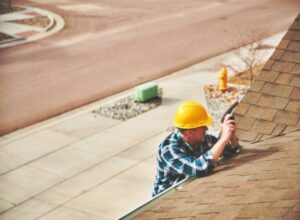The Importance of Regular Roof Inspections
Keeping Your Home Safe
A well-maintained roof is critical for the durability and safety of any building, whether residential or commercial. Regular roof inspections are essential to identify potential issues before they become significant problems. This article explores the significance of regular roof inspections, common issues identified during these inspections, and the recommended frequency and timing for them.
Roof Inspection Overview
Roof inspections involve a complete examination of the roof’s condition to identify any signs of damage or wear. This process can include checking the shingles, gutters, flashing, and other components of the roof system. Roof inspection services are offered by professional roofing inspection companies, which provide a detailed assessment and recommend necessary repairs or maintenance.

Common Roof Issues
During a roof inspection, several common issues may be identified. These include:
- Absence of Shingles
Missing shingles can expose the underlying roof materials to wind, sun, and rain, leading to water damage and increased wear. Identifying and replacing absent shingles promptly is crucial to maintaining the roof’s integrity.
- Vegetation or Moss Development
Moss, algae, or other vegetation growing on the roof can retain moisture and cause the roofing materials to deteriorate faster. Regular cleaning and inspections can prevent such growth and extend the life of the roof.
- Roof Leaks or Fractures
Leaks or fractures in the roof can lead to water damage inside the building. Signs of a leaky roof include water stains on ceilings and walls, which should be addressed immediately to prevent further damage.
- Curling or Buckling Shingles
Curling or buckling shingles is an indication that they are nearing the end of their life or that there might be an underlying problem, such as poor ventilation or installation issues. They need to be replaced to ensure the roof remains watertight.
- Granules from Shingles Found in Gutters
Finding granules from shingles in the gutters is a sign that the shingles are deteriorating. This material protects the shingles from harmful UV rays, and their loss can accelerate the aging of the roof.
- Roof Sagging or Drooping
A sagging or drooping roof is a serious issue that often indicates structural problems. This could be due to a compromised roof deck, excessive weight on the roof, or deteriorating materials, requiring immediate professional attention.
Recommended Frequency for Roof Inspections
The frequency of roof inspections depends on several factors, including the age of the roof, the climate, and the type of roof. As a general guideline:
- New Roofs: A roof inspection after installation is essential to ensure it was installed correctly. After this, a professional inspection every few years is recommended.
- Older Roofs: For roofs over ten years old, annual inspections are advisable.
- Severe Weather: After experiencing severe weather such as storms or heavy snowfall, a house roof inspection should be conducted to assess any damage.
Timing of Roof Inspections
When it comes to roof inspections, timing is critical. The best times to schedule inspections are:
- Spring and Fall: These seasons offer moderate weather conditions, making it easier to identify and repair any damage caused by winter storms or summer heat.
- Post-Installation: A roof inspection after installation ensures that the roof has been properly installed and that there are no immediate issues.
- After Severe Weather: Inspections after extreme weather conditions help identify and address any damage quickly.
Significance of Regular Roof Checks
Regular roof checks are essential for several reasons:
Preventive Maintenance: Identifying and resolving issues early can help avoid expensive repairs in the future.
Extending Roof Lifespan: Regular inspections, routine maintenance, and prompt repairs can greatly prolong your roof’s lifespan.
Safety: A well-maintained roof guarantees the safety of the building’s occupants by preventing leaks, structural damage, and potential collapses.
Property Value: Regular roof inspections and maintenance help maintain the property’s value and appeal, which is especially important if you plan to sell or lease the building.
Understanding the Value of Periodic Roof Checks
Periodic roof checks are a proactive approach to property maintenance. Whether it’s a home roof inspection or a commercial roof inspection, regular assessments by roofing inspection companies provide peace of mind. Roofing professionals have the knowledge and experience to identify subtle signs of wear and tear that might be missed by an untrained eye. Homeowners and property managers should prioritize roof inspections as part of their routine maintenance schedules. By investing in regular roof inspection and repair services, you can make sure that your roof remains in superb condition, protecting your property and its residents.
